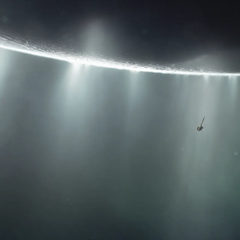
Articles on NASA
Displaying 1 - 20 of 482 articles

Research funding is down in recent years despite promises made with the CHIPS and Science Act.

Safely landing a spacecraft that’s falling from the sky very quickly is easier said than done.

There’s intense competition between the US and China to establish bases on the Moon.

Hubble’s technical issues continue. But through some clever engineering, the telescope can continue operations with just 1 gyroscope.

Scientists don’t often have the time to get all their equipment set up to study incoming meteors from space. Instead, they can study capsules from space missions as ‘artificial meteors.’

An interstellar probe could help scientists answer fundamental questions about how the Sun influences Earth, space and other planets in the solar system.

Analysis of two major cosmic blasts deepens the mystery of where the universe’s ‘heavy’ elements come from.

The best spots on the Moon for lunar bases are the same spots where scientists want to build telescopes − can these two interests coexist?

You have the US space program to thank for some of the technology in your phone and laptop.

Solar storms can play havoc with electrical grids, satellites and railway lines.

Starliner is only the second vehicle to launch astronauts from US soil since the retirement of the shuttle in 2011.

The Starliner launched June 5 after several delays, making it the first commercial crew craft that’s not SpaceX’s Dragon to lift off.

New ideas will be key to making the mission happen after a report criticised its timescale and cost.

It’s not easy to collect rocks on a budget when the rocks are 140 million miles away.

The Perseverance rover has arrived at what’s thought to be an ancient shoreline on Mars.

There’s anxiety among space scientists following Nasa’s decision to rethink sample return mission from Mars.

Saturn’s moon Enceladus has geysers shooting tiny grains of ice into space. These grains could hold traces of life − but researchers need the right tools to tell.

Space exploration is not a waste of resources, but a source of technological and medical advances, a tool for climate monitoring and a source of educational inspiration for youth.

With wealth, charm and tactful leadership, John F. Kennedy set the standard for working toward the common good and decency in public discourse

A type of eclipse is crucial for measuring what’s in the atmospheres of planets orbiting distant stars.
